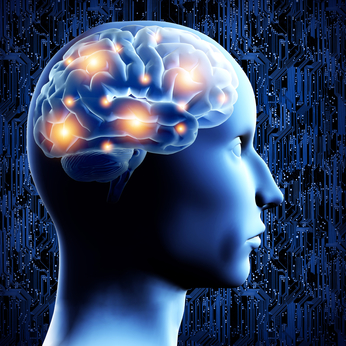When you experience something emotionally intense and frightening or traumatic, it overwhelms your ability to cope effectively. If it is something that’s difficult to make sense of and resolve, it can become stuck in your body. The traumatic event lingers in the central nervous system. Because of this, you might become over-reactive whenever you encounter something that reminds you of the trauma. It is difficult to access the part of the brain that stores trauma with traditional talk therapy. Therefore, a different type of approach is necessary. A therapeutic approach known as brainspotting can help you access, process and heal trauma.
Brainspotting
Brainspotting is a therapeutic technique developed by David Grand in 2003 to help treat trauma and posttraumatic stress disorder (PTSD). It is a brain-body, relational, mindfulness based approach. Brainspotting developed out of Grand’s work with Eye Movement Desensitization Reprocessing (EMDR) and Somatic Experience (SE). It is based on the premise that where you look impacts how you feel. Therefore, by maintaining a specific eye position, you can access, process, and release trauma that’s frozen in the subcortical brain. Since brainspotting is a therapeutic tool, you can use it in conjunction with other therapeutic approaches. According to Grand, brainspotting is a physiological approach with psychological consequences.
What Is Brainspotting Like
In brainspotting, the therapist helps the client find an eye position to use. The eye position is related to the negative emotion and body sensations stored deep in the brain. An eye position is often located with a pointer. The therapist uses the pointer to slowly go across the client’s field of vision. When the client gazes at the brainspot, they are able to access traumatic memories and painful emotions. The client can say as much or as little as they want during the process. Listening to bilateral sound helps the client further process. The dual attunement process is one of the most integral parts of the technique. This is where the therapist attunes to both the relational connection and the brain-body response of the client. The therapist maintains a mostly nonverbal, empathic connection with the client. This enables the client to utilize the brain’s natural ability to heal.
How Does Brainspotting Work
Brainspotting is a theoretical approach, so the exact way it works is unknown. However, brainspotting is able to access parts of the brain that are not easy to reach through traditional talk therapy. Focusing on a brainspot helps bypass the thinking brain. This allows you to go deeper into the subcortical brain in the limbic system and brainstem where trauma is stored. The subcortical brain is about instinct, creativity, thought, and spirituality. It also controls all bodily functions. Trauma overwhelms the brain’s processing ability, leaving parts of the experience unprocessed, and frozen in time. The fixed eye position used on the brainspot enables the brain to access and process these unprocessed experiences. This occurs due to the neuroplasticity of the brain, or its ability to change and form new connections. Once the brain can process these experiences and return to a state of adaptive homeostasis, related symptomatology significantly decreases.
Is Brainspotting Effective
Brainspotting is a safe and effective approach overall. However, It has not been thoroughly studied as it is relatively new. Many therapists that have used brainspotting with their clients report an increase in their client’s emotional well-being. It was also found to be the most effective approach used for the survivors of the Sandy Hook school shooting in Newtown, Connecticut. It is possible to use this approach in conjunction with other modalities to treat trauma and PTSD symptoms. Also, it may be effective in treating chronic pain, substance abuse, ADHD, anxiety, impulsivity, and anger. In addition, Grand has successfully used brainspotting to enhance the performance of artists, athletes, and other professionals.
The Differences Between Brainspotting And EMDR
While both brainspotting and EMDR have many similarities, there also some differences. While both help access trauma through bilateral stimulation, they go about it differently. EMDR follows a very specific protocol. Brainspotting is more flexible and can be used in conjunction with other therapeutic approaches. EMDR uses rapid eye movements for processing. Brainspotting utilizes a fixed eye position. EMDR can be overstimulating for some, and is not appropriate to use for everyone. Brainspotting can be adapted for almost everyone. This is because it relies more on the relational attunement between the therapist and client, than a strict protocol.
If you have experienced trauma and are having symptoms of PTSD, brainspotting can help. A therapist trained in brainspotting can help you access the trauma so you can process it and let it go. When you are able to release the trauma, PTSD symptoms can decrease and emotional well-being can increase.



